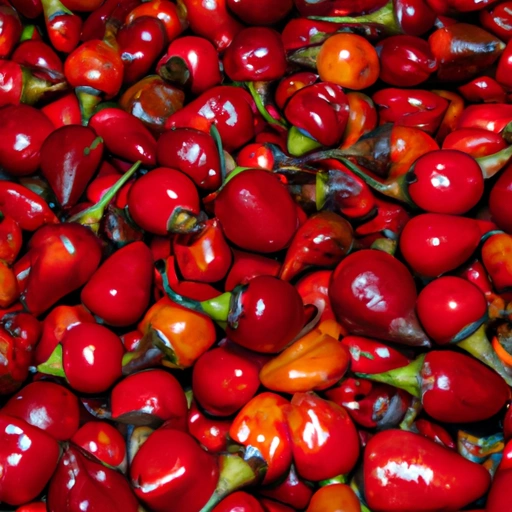Cherry Pepper
Description

Cherry pepper, also known as pimento or piquanté pepper, is a variety of Capsicum annuum that is small, round, and bright red when fully ripe. Despite its spicy name, the cherry pepper is known for its sweet, mild flavor with a heat that is more akin to a bell pepper rather than a jalapeño. This ingredient is a favorite in many kitchens due to its appealing color, sweet taste, and the gentle warmth it brings to dishes.
Common uses
Cherry peppers are commonly used in a wide array of dishes, both as a primary and a secondary ingredient. They are often found pickled, stuffed, or used as a garnish. The sweet yet mildly spicy flavor profile makes them a unique addition to salads, sandwiches, and antipasti platters, while their vibrant red hue adds a pop of color to any dish.
Nutritional value
Calories
Cherry peppers are low in calories, making them a healthy addition to any meal. One average-sized cherry pepper (about 45g or 1.6oz) contains approximately 15 calories.
Protein
They provide a modest amount of protein, with about 0.5 grams per average-sized pepper.
Fat
These peppers are virtually fat-free, with less than 0.2 grams per serving.
Carbohydrates
Cherry peppers contain about 3.5 grams of carbohydrates, most of which come from natural sugars and dietary fiber.
Vitamins
They are an excellent source of vitamin C and also provide vitamins A, E, and several B-complex vitamins.
Minerals
Mineral content includes potassium, magnesium, and iron, though in smaller amounts.
Health benefits
The nutritional profile of cherry peppers suggests several health benefits. The high vitamin C content is important for immune system function, while the dietary fiber aids in digestion. The presence of antioxidants such as vitamin A and E helps to combat free radicals and may reduce the risk of chronic diseases.
Potential risks
Though cherry peppers are generally safe for consumption, individuals with nightshade allergies should approach them with caution. Overconsumption may lead to gastrointestinal discomfort for those with sensitive stomachs, particularly when eaten in their pickled form which contains higher levels of sodium.
Common recipes
Cherry peppers are featured in a variety of recipes, from the classic Italian 'Peperoni ripieni' (stuffed cherry peppers) to more modern uses like diced in fresh salsas or as a colorful topping on pizzas.
Cooking methods
These versatile peppers can be roasted, grilled, sautéed, or even enjoyed raw. They're frequently pickled as well, which preserves their flavor and extends their shelf life.
Pairing with other ingredients
Cherry peppers pair well with a wide range of ingredients, including soft cheeses like goat cheese or cream cheese when stuffed, as well as robust meats like salami or prosciutto. Their sweetness also complements bitter greens in salads.
Summary
Cherry peppers are a sweet and mildly spicy ingredient that brings a distinct flavor profile and a burst of color to a variety of dishes. They are rich in vitamins and low in calories, making them a healthy choice for those looking to add a touch of spice without overpowering heat. Their historical roots in South America and popularity in both European and American cuisines demonstrate their broad appeal and versatility in the kitchen.